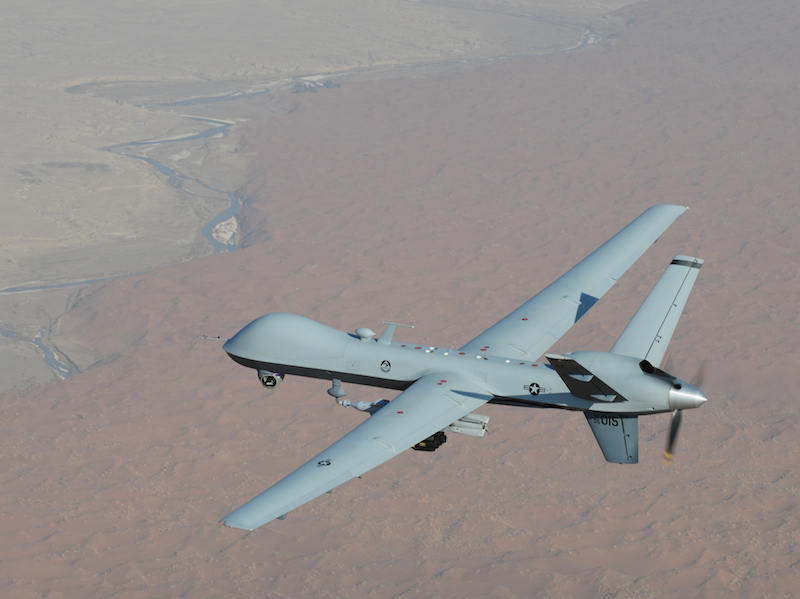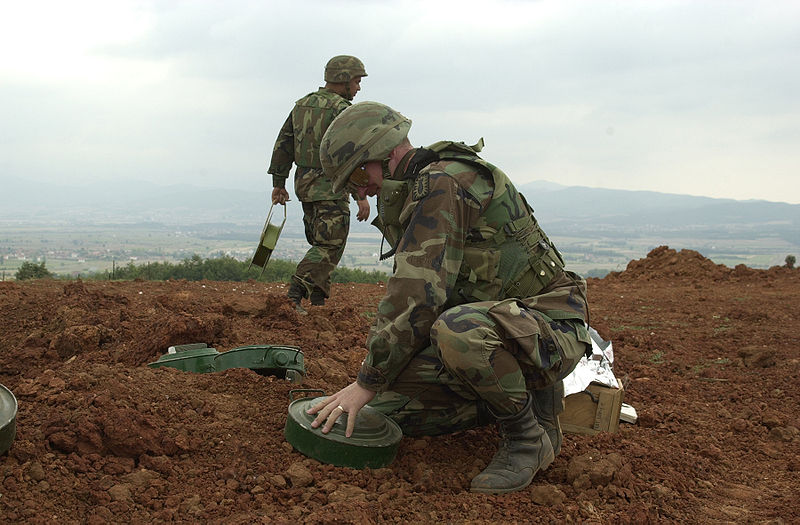Drone technology has been used for decades in a military environment. Right now, the future of the unmanned aerial vehicle is being decided: will they remain simply information gatherers, or will they become widespread in their use as weapons amongst NATO Member states?
The use of UAVS has become a matter of increased domestic debate across NATO Member States. In September 2016, NATO Association of Canada (NAOC) Program Editor Elise Wagner explained how Canada is undergoing significant procurement of surveillance drones. While Canada does not currently employ armed drones, their use by other NATO Members such as the U.S. illuminates their potential applications. Much of the discussion in Canada and other NATO Members revolves around ethics and the rules of engagement. The top leadership at the RCAF and the Chief of Defence Staff General Vance have spoken of the necessity of acquiring armed drones, and there is an indication that drones with lethal force will be procured in the near future.
UAVs were utilized extensively by the RCAF for a variety of tasks in Afghanistan, including intelligence and combat data roles. Moreover, the Royal Canadian Artillery benefited from the use of drones for confirming the targets of artillery batteries, and have greatly reduced civilian casualties as a result. Drones have proved their usefulness in Afghanistan and other countries by gathering good data that reduces the risk to service members.
While drones employed in information gathering roles have been operational for decades, they are constantly being improved.
There are many avenues for improving drone technology. First, there is the type of airframe used to transport the sensor equipment. Fixed-wing designs have been the most common type of UAV. However, alternatives that require less or no fuel have been developed to reduce the cost of conducting drone-based information gathering.
Some of the innovations revolve around increasing the area covered and reducing the cost and infrastructure required to maintain large-scale drone surveys. Russia has recently developed kites for military scouting which will not require access to fuel and other supplies to maintain operation. The kites, designed by the United Instrument Manufacturing Corporation (UIMC), have dimensions ranging from 30 to 250 square metres and are built from heavy-duty materials to withstand strong winds. In Afghanistan, cameras attached to balloons were used by NATO Members to view the areas surrounding forward operating bases. In both cases, the ability to deliver sensor packages to a high vantage point using innovative means has accomplished the objective at a fraction of the cost.
With their inclusion in most military forces, the number of incidents of crashes has also increased. A Washington Post investigation claims over 400 major accidents have occurred between 2001 and 2014 due to U.S. military drone crashes. Whether this number is significant or whether the accidents constitute a serious threat to the public safety of non-combatants is not clear, as no-one has died in the incidents. That being said, this risk is likely offset by the reduced risk to both military and civilian life in conflict situations.
The domestic dialogue in Canada and other states regarding armed drones has been sensationalized in the media, with movies such as Good Kill (2014) horrifying audiences and painting a grim picture of the potential implications of the misuse of such weapons. The role of drones in saving service member lives has received much less attention. It remains to be seen whether armed drones will receive the approval of the public and what this effect will have on the future development of drones in security applications.
Drones have proven their usefulness in current operations, however the domestic debate regarding the extent of their capabilities continues.
Photo: MQ-9 Reaper unmanned aerial vehicle flies a combat mission over southern Afghanistan, by U.S. Air Force Lt. Col. Leslie Pratt via Wikimedia. Public Domain
Disclaimer: Any views or opinions expressed in articles are solely those of the authors and do not necessarily represent the views of the NATO Association of Canada.




